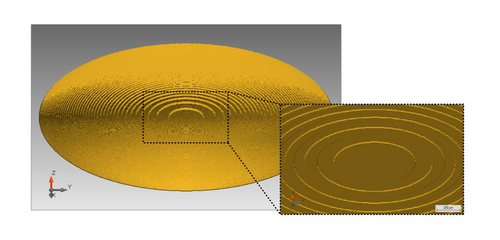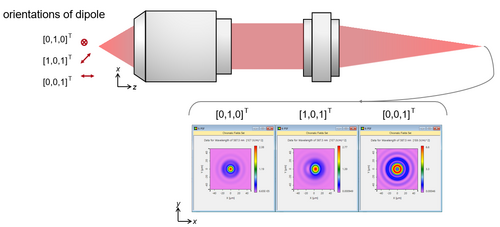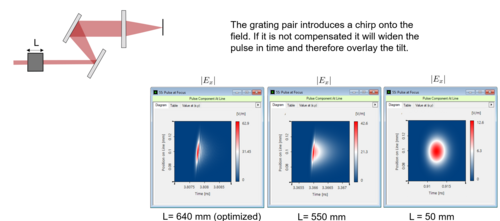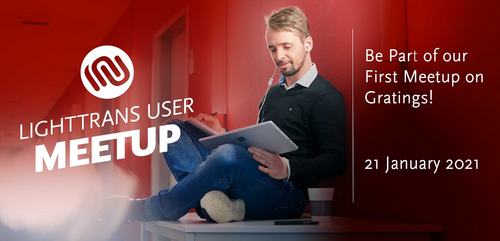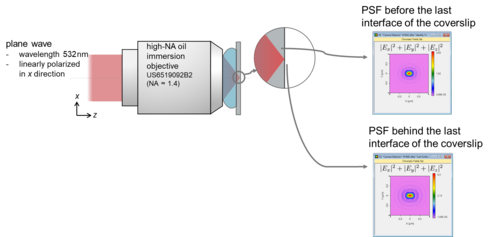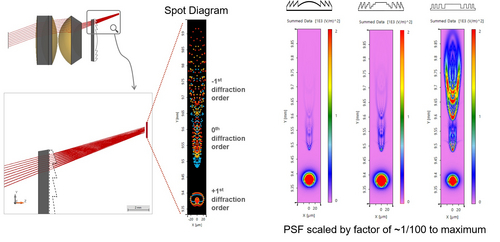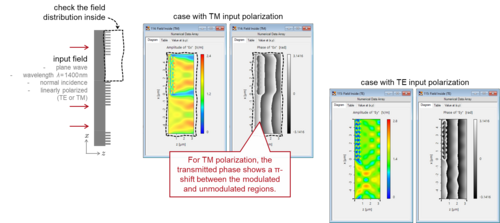What’s new in our Optical Modeling and Design Software?
Join our next Webinars on Fiber & Flat Optics!
Register now for our next webinars and save your seat.
Fiber Optics – 03 February
Flat Optics – 04 February
Engineered PSF for High-NA Microscopy Imaging
The microscopy imaging techniques are developed rapidly in recent decades. The PSF (Point Spread Function) is very often not an Airy disk at the image plane. A donut shape can be engineered when imaging a dipole source orientated along the longitudinal axis. We demonstrate in VirtualLab Fusion that different asymmetric PSFs, which are not Airy disks, are obtained when the orientation of the dipole source changes. Moreover, a double-helix PSF can be obtained by inserting a certain phase mask in the pupil plane of a microscopy system [Ginni Grover et al., Opt. Exp. 2012]. With such an engineered PSF, even a small defocus of the object can be observed, i.e., the axial resolution can be improved drastically compared to the traditional imaging approach. We demonstrate this phenomenon by applying a commercial microscopy lens (Nikon) system in VirtualLab Fusion.
Read moreSimultaneous Spatial and Temporal Focusing (SSTF)
For applications in the area of ultrashort pulse laser technologies, where the properties of the field must be controlled in both the space and time domains, “Simultaneous Spatial and Temporal Focusing” (SSTF) is a frequently used technique. Such setups often lead to spatiotemporal effects like the pulse front tilt. We built a commonly used SSTF setup to investigate the spatiotemporal behavior of the field in the focus and the effects of various system parameters on the resulting pulse front tilt.
Read moreSave your Seat for Our First User Meetup on Gratings
Register now and save your seat for our first User Meetup. To inaugurate this new format we have chosen the topic of gratings.
21 January | 09:00 – 20:00 (CET)
Read moreTight Focusing for Immersion Microscopy and STED Microscopy
Tight focusing by high-NA objective lenses, which generates a small PSF (Point Spread Function), is essential for high-resolution microscopy systems. Among many other microscopy systems, immersion microscopy uses a coverslip to separate the immersion liquid and the specimen. It may distort the PSF at the focal plane. We demonstrate that the asymmetric PSF is further elongated behind the coverslip. Moreover, STED (stimulated emission depletion) microscopy, which is widely used for tens-of-nanometer resolution, requires a donut-shaped PSF for depletion. We follow the proposed method by P. Török and P.R.T Monro to model the tight focusing of a Gaussian-Laguerre beam. The generation of a donut-shaped PSF is demonstrated.
Read moreSave your seat for our Webinars on Diffractive Lenses & Fiber Optics!
In order to adapt to different time zones worldwide, we will hold the webinars twice (all times CET):
Diffractive Lenses | 13 January | 10:00 & 18:00
Fiber Optics | 3 February | 10:00 & 18:00
Take Part in Our Upcoming Online Events
Register now for our next online events and save your seat.
Webinar | Diffractive Lenses – 13 January
User Meetup | Gratings – 21 January
Webinar | Flat Optics – 28 January
Online Training | Grating | 01 – 04 & 08 – 11 February
Polarization-Dependent Gratings
Gratings, especially those with sub-wavelength structures, are known to be sensitive to the polarization of light. Such behavior can be detrimental; but it can also be made use of. For example, we construct a polarization-sensitive diffraction grating, following the work of J. Wüster et al., and show its properties in VirtualLab Fusion. Another typical example is to exploit the polarization dependence to make wire-grid polarizers.
Read more



